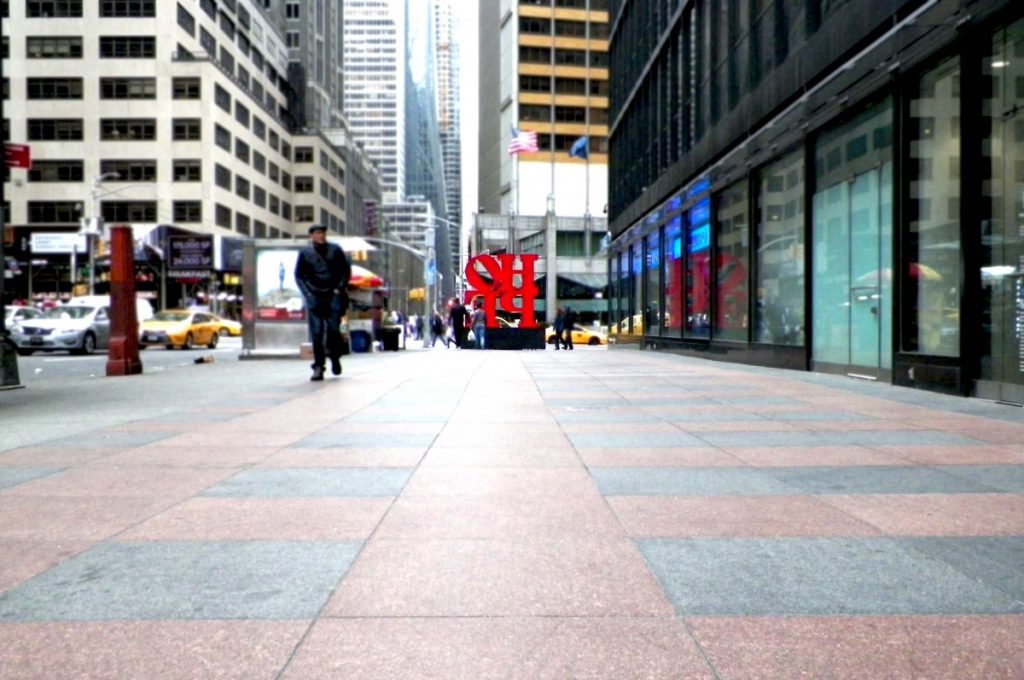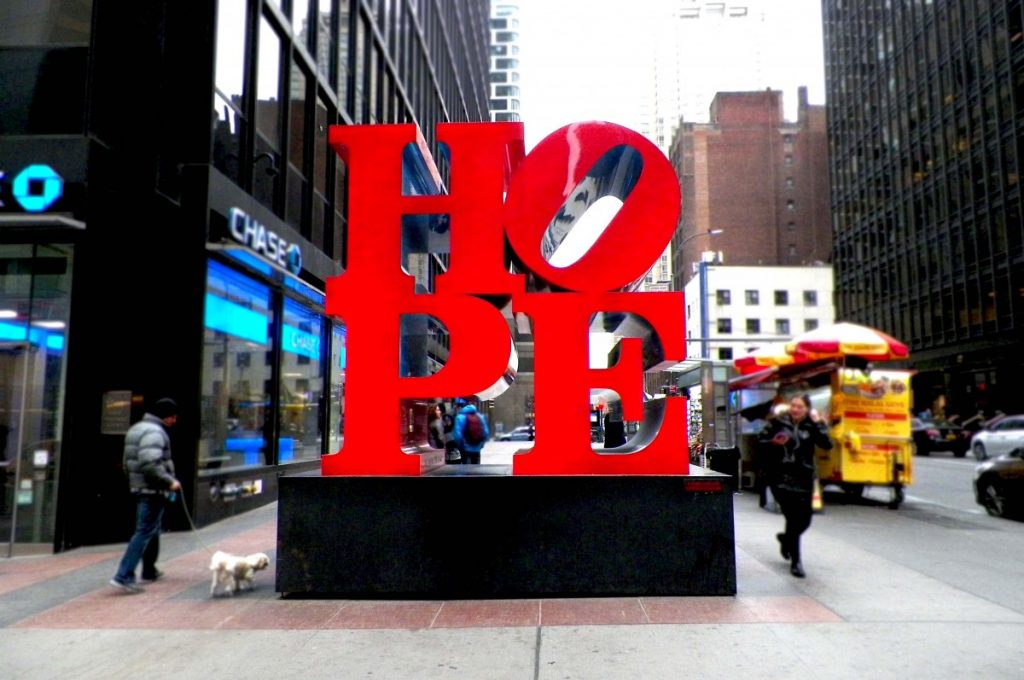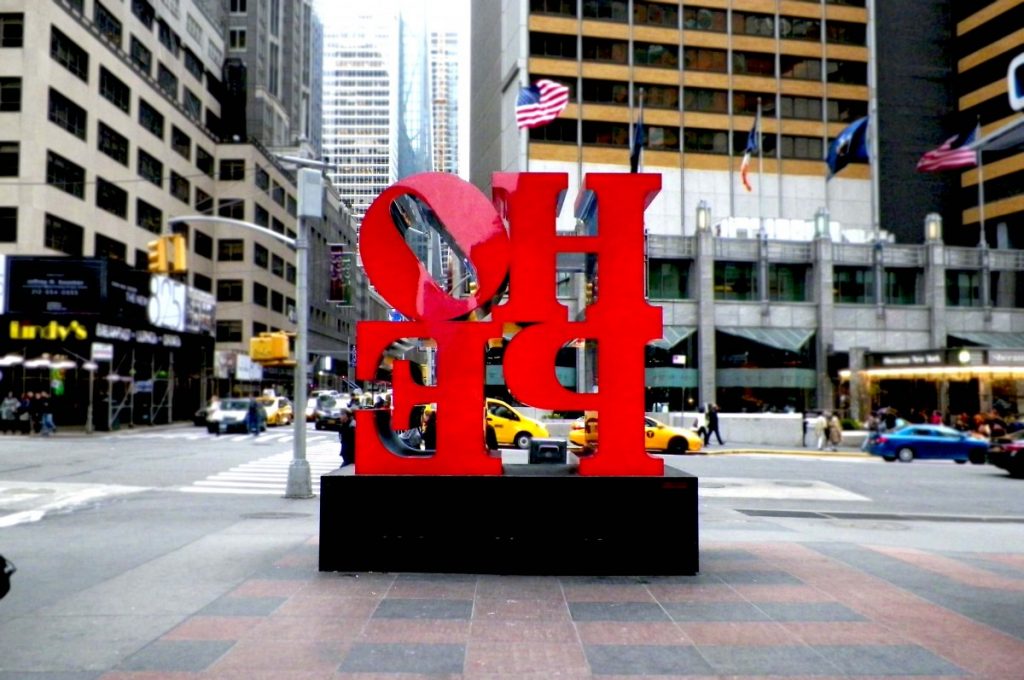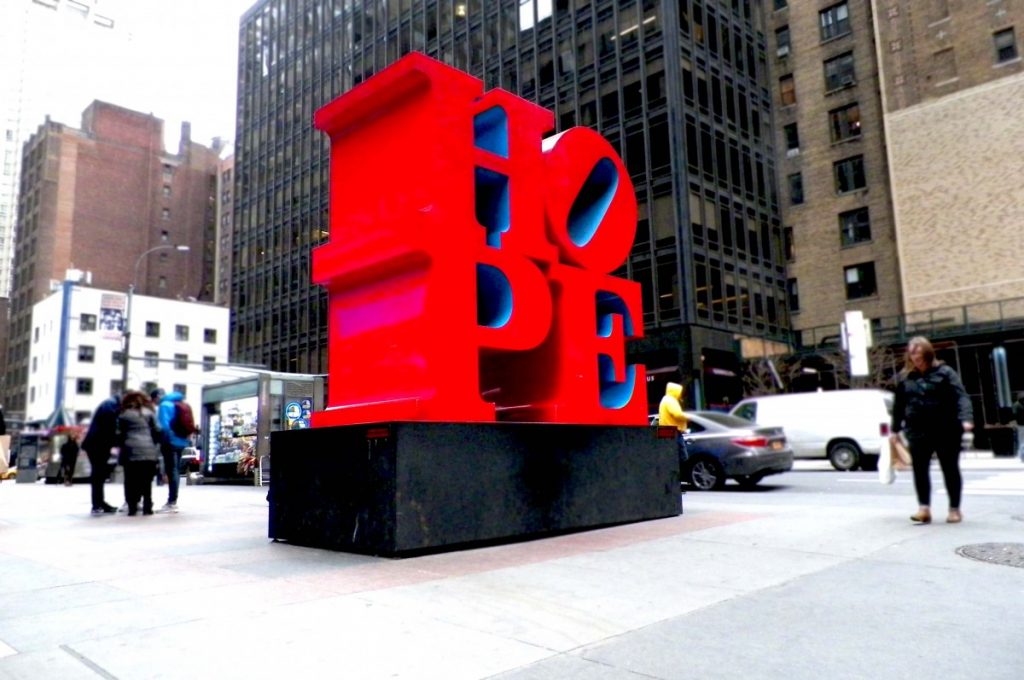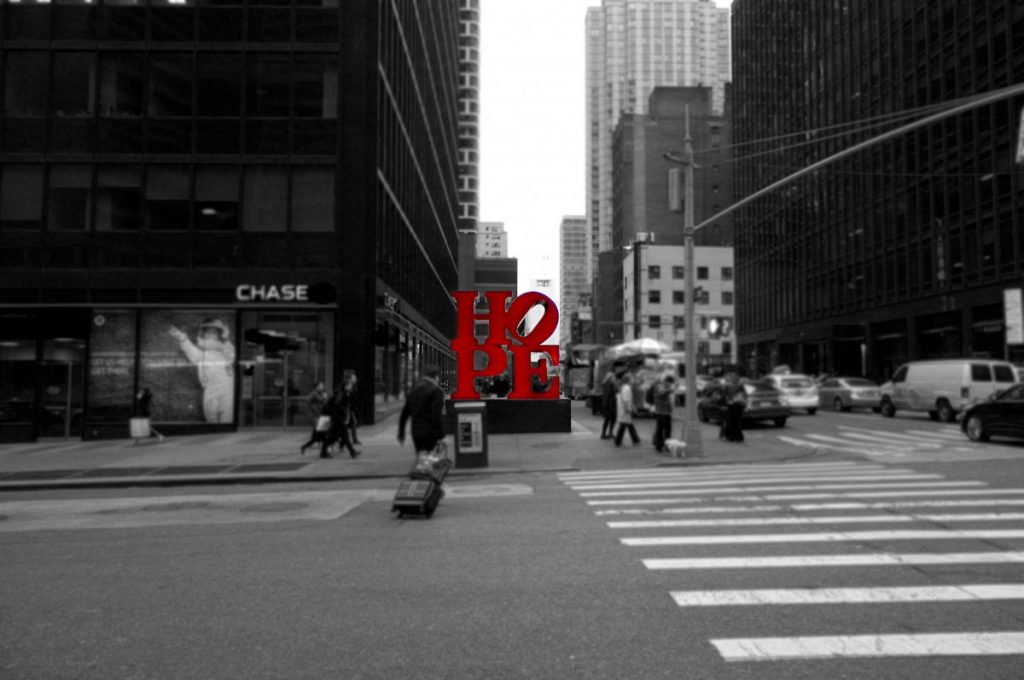Last week I discussed part of the origin of the LOVE pop art icon, and now I will continue to discuss the birth of this beloved print.
As referenced last week by Mental Floss, Robert Clark was working a few part time jobs while trying to find his calling in the art world. He vied to discover himself in an abyss of popular artistry. He wanted to make something interesting and, most importantly, avant-garde (something new and unusual). Clark soon made his first print called “Stavrosis,” this was a painting depicting his own version of the Crucifixion of Christ. After finishing this abstraction he finally felt a spiritual calling to his artistry; something akin to a divine epiphany. Clark then changed his name to symbolize his spiritual rebirth; he decided to rename himself Robert Indiana, after the place in which he was raised..
In 1961 Indiana caught his first break, doing a piece called “The American Dream.” This piece is what got him noticed as one of the contributors to a new art style called “Pop art.” When most people hear Pop art they automatically think Campbell’s soup, weird blond wig, and some wonky ‘80’s glasses, but Indiana actually played a large part in the art cultural movement and even worked closely with Andy Warhol. But he decided to refrain from the public eye since he didn’t want to lose his faith in a sea of drugs, sex, and intense limelight.
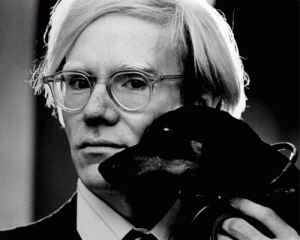
We see ya, Andy…
Image Credit: Giphy
Indiana went on to get commissioned to do a piece for the World’s Fair of 1964 in New York City, which was one of the precursors to the LOVE art piece as he slowly introduced typography into the art world. This one was called “EAT” and was a print of that word. Everyone got confused by the piece, mistaking it for a cafe (or maybe one of those automat things that went out of style) but the simplicity of the word was secretly really poetic.
1958 was the year of early conception of the beloved typography piece called “LOVE” and almost instantly the icon was born. He toyed with the poeticism of the word “LOVE”, separating the LO and VE, and tilting the O the side. Some viewed this inquisitive “O” as sensual and others saw nothing of the sort. By 1965, MoMA had commissioned him to make a version for their year end Christmas card and in that day and age his LOVE piece went, what we know today as, viral. Everyone wanted a LOVE print since it symbolize so many different things in that time. The Hippies used it to “…spread love, not war.” and the popularity only increased from there. MoMA gave Indiana his own show in 1966 since people loved LOVE so much. By 1971, sculptures of LOVE made of COR-TEN steel debuted in New York and Boston.
But there was a MAJOR issue in this rise to stardom…
Since Indiana didn’t want interrupt the print with a copyright, insignia, or watermark, he didn’t exactly have legal jurisdiction over his own piece. Therefore anyone could buy, sell, or trade his work without any chance of plagiarism. Soon, paperweights and other tchotchkes began to surface in retail, without permission of resale to Indiana. The more it was used, the more Indiana was forgotten. His typographic poeticism and wit was sold to the highest bidder, unbeknownst to him. And his LOVE piece soon fell prey to cheesy gimmicks in advertising.
After this devastating loss, Indiana disappeared from the art scene for the next thirty years. But, in 2008 he felt compelled to make another shock in the art world. Indiana came back to aid in former President Barack Obama’s presidential campaign; he made HOPE. It was modeled after LOVE but had a different word in mind, curated to mean a million things in one print.
According to New York Daily News, In 2014, Indiana released more public sculptures of HOPE in New York City, Venice, Caracas, Munich, Miami, Vinalhaven, and Maine, vying to fill the world with hope. It was engineered to take selfies with and post them for International Hope Day which also is Indiana’s birthday, September 13th.
Both sculptures still stand in their original places today; a five minute walk between each other. They are free to visit! So feel free to take your own selfies with them.

